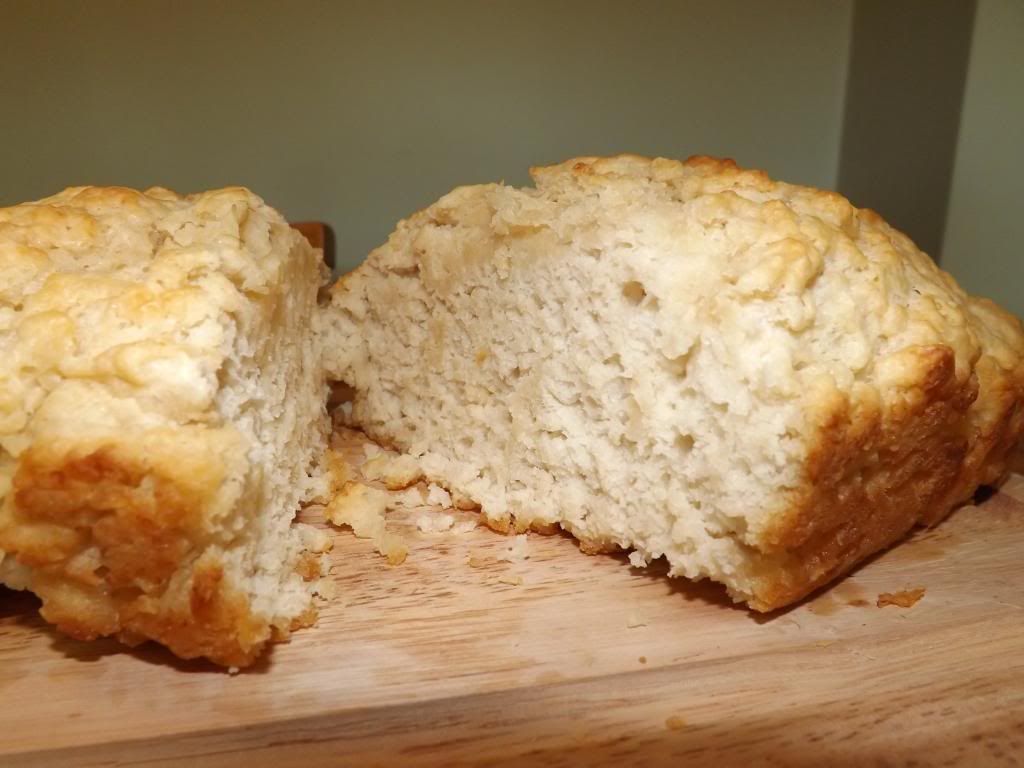 One of the many wonderful things about beer is its remarkable diversity; more than any other beverage, beer comes in different tasting varieties, strengths, using different ingredients and methods of brewing. Consider how foreign a roasty, bitter chocolate oatmeal stout must taste to someone who just finished a Belgian Wit, or sour lambic, pilsner or India Pale. You just can't get that kind of variance in spirits - hell, not even with wine. This quality makes beer a natural accompaniment with food, whether as the chosen beverage for the evening, or as part of the cooking process itself. But wait a minute - isn't this wine's job? We have whole professions devoted to selecting the perfect wine to accompany a meal (a sommelier), and our cookbooks are full of instructions to add wine - to flambe, to steam, or to make a sauce. Don't get me wrong: a nice bottle of wine is a great thing to share over dinner, and some recipes really deserve wine as one of their ingredients. But if Garrett Oliver - brewmaster at Brooklyn Brewery and author of The Brewmaster's Table - has anything to say about it, we'd be using beer as part of our culinary lives a great deal more.
One of the many wonderful things about beer is its remarkable diversity; more than any other beverage, beer comes in different tasting varieties, strengths, using different ingredients and methods of brewing. Consider how foreign a roasty, bitter chocolate oatmeal stout must taste to someone who just finished a Belgian Wit, or sour lambic, pilsner or India Pale. You just can't get that kind of variance in spirits - hell, not even with wine. This quality makes beer a natural accompaniment with food, whether as the chosen beverage for the evening, or as part of the cooking process itself. But wait a minute - isn't this wine's job? We have whole professions devoted to selecting the perfect wine to accompany a meal (a sommelier), and our cookbooks are full of instructions to add wine - to flambe, to steam, or to make a sauce. Don't get me wrong: a nice bottle of wine is a great thing to share over dinner, and some recipes really deserve wine as one of their ingredients. But if Garrett Oliver - brewmaster at Brooklyn Brewery and author of The Brewmaster's Table - has anything to say about it, we'd be using beer as part of our culinary lives a great deal more.It's a fantastic book, which takes you through the history of beer and brewing, with a healthy stop at each of the major styles, exploring the details of what makes each style unique. But Oliver's main mission is to explain how we can pair our daily meals with an appropriate malty beverage. And he pulls no punches here with his assault on wine and its hegemonic position as the chosen drink of choice, claiming that wine is "no substitute" for beer when it comes to cleansing the palate and bringing out the best of both components of the meal. Beer also doesn't have as many challenges with so-called "difficult ingredients", ones that even the best connoisseurs will have trouble pairing with wine. Finally, for those concerned about the thickness of their waist and their wallets, beer is relatively low in calories and usually cheaper than wine (you'd be hard-pressed to find a beer over twenty dollars; not so with a vintage wine). So how should we pair beer with food? I won't go into too much detail (it's better if you check out the book yourself), but Oliver suggests pairing using a "like-to-like" rule. If your food is brown and hearty (say, a stew or hamburger), go with an amber lager, or for heavier fare, a brown ale. Lighter fare, like brunch or seafood, would do better with a pale lager or wheat beer. It's all about balance.
So we've talked about pairing beer with food, but what about cooking with beer itself? There's an incredible world of beer-centred recipes out there; all you have to do is explore, but to give you a few examples, beer is excellent for:
- braising meat
- sauces
- stews
- soup or broth bases
- chili
- desserts (especially with fruit beers or chocolate stouts)
These are just a few basics; there's all sorts of crazy recipes with beer involved out there (beer dumplings anyone?) that are probably pretty damned tasty - I haven't tried them all. But something I'm hoping to do around the den is try out some of these recipes and see how they work; a little something to add to the diversity of the site so that it doesn't become so review-centric (which I've noticed has been a trend recently).
Let's start with the simplest, most basic recipe you can do with beer - and one that really hearkens back to the earliest history of our favorite beverage - beer bread. (Thanks Ned for introducing me to this recipe!)
Beer isn't all that different from bread if you think about it. Both involve grains (usually wheat or barley), sugars and yeast, carbonation, and cooking time. But the connection is even closer than that. Patrick McGovern is the director of biomolecular archaeology at the University of Pennsylvania museum, and is considered to be one of the world's foremost experts in the ancient history of beer and wine. McGovern uses samples from pottery shards and other archaeological findings to piece together how and when our ancient ancestors first began brewing this remarkable beverage. As he explains in his Uncorking the Past (2009), the processes used in antiquity for making beer and bread were strikingly similar; Ancient Egyptians, for example, often used the very same vats to either bake their bread or brew their beer. Sumerian brewers would often use barley 'cakes' either as bread-like nourishment or as the malt base for their brews. Indeed, there was a healthy debate among archaeologists/anthropologists regarding which foodstuff came first - beer or bread. (McGovern argues neither, opting for the simpler to create mead/honey or wine). Since ancient times, the link between bread and beer has continued. We've all heard of Guinness as being referred to as 'liquid bread', a silly comparison considering that Guinness is a low calorie, low alcohol brew. But beer's chemical similarity to bread has allowed it to be used as a food supplement, particularly for medieval monks, who would often consume beer in lieu of bread during periods of fasting.
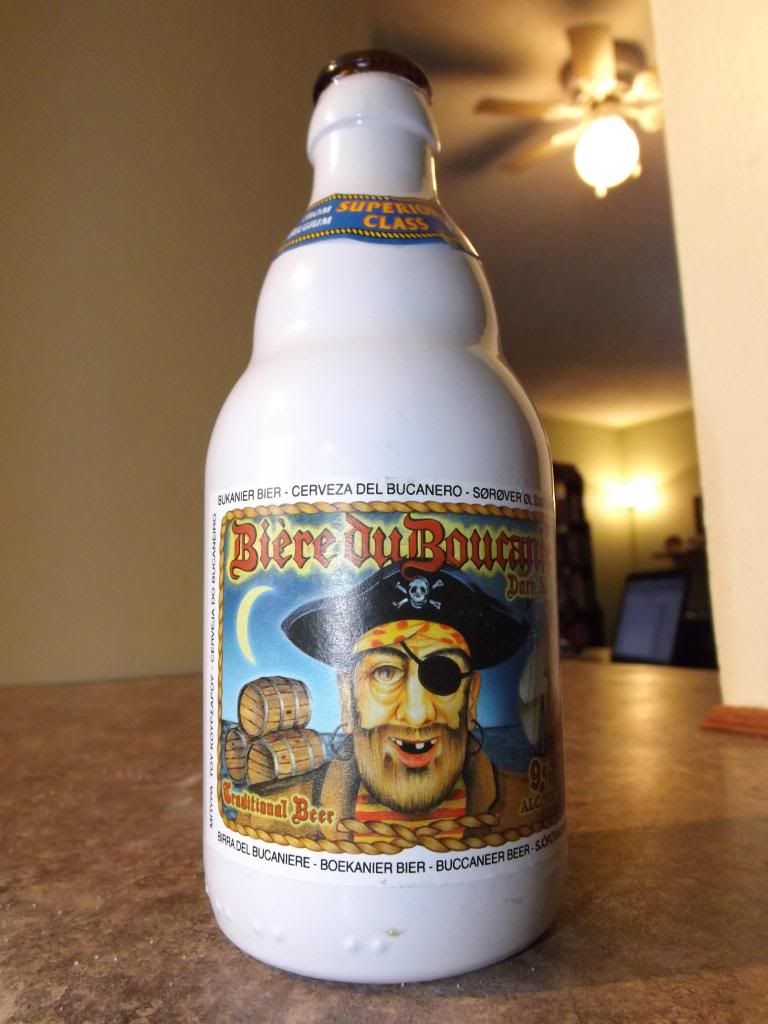 Beer bread has another thing going for it, and that's the fact that the beer we add to the batter already has the yeast in it, which means no waiting for hours for the yeast to rise. Now, the end result is not nearly as fluffy and light as your traditional baked breads, it is nevertheless about the quickest bread you can put together - and it tastes pretty damned good too. This recipe is remarkably simple, and has the added benefit of being completely customizable, depending on what style of beer you use. Today, I went with a spare bottle of a Belgian Dark Ale, Biere du Boucannier Dark Ale. It's a bit smaller than the recommended size of beer (330mL) vs. 375mL), but the end result was just fine.
Beer bread has another thing going for it, and that's the fact that the beer we add to the batter already has the yeast in it, which means no waiting for hours for the yeast to rise. Now, the end result is not nearly as fluffy and light as your traditional baked breads, it is nevertheless about the quickest bread you can put together - and it tastes pretty damned good too. This recipe is remarkably simple, and has the added benefit of being completely customizable, depending on what style of beer you use. Today, I went with a spare bottle of a Belgian Dark Ale, Biere du Boucannier Dark Ale. It's a bit smaller than the recommended size of beer (330mL) vs. 375mL), but the end result was just fine. So how do we make it?*
1) First things first, grab two bottles of beer: one for the bread, and one for yourself.
2) Cheers with someone you love.
3) Get that oven of yours up to 375C and use some shortening to grease up a bread pan (preferably a 9x5inch one).
4) We start with our dry ingredients.
- 3 cups of all purpose flour (I went with Robin Hood, due to its in-my-pantry-ness.)
- 3 tablespoons of well-packed brown sugar. I've done this with both light and dark brown sugar and it tasted fine either way.
- 1 tablespoon of Baking powder
- 1 teaspoon of table salt
5) Melt yourself about four or five tablespoons of butter in a ramekin or microwavable bowl and set that aside.
6) Combine all your dry ingredients in a large bowl, and add your beer. Remember, this is your time to be creative. Any ol' beer will do, as long as it's around a bottles' worth. Dump that sumbitch right in there. Experiment with different flavors and see what you like! Just pour it right into your dry ingredients and watch that sucker bubble up.
7) Stir well, otherwise you'll get patches of flour in your finished product. Which is gross. Stir it up until it turns into a thick, sticky batter with no visible patches of flour.
8) Pour (or if it's that sticky, pick up and toss) your batter into your greased bread pan. Spread it around so that it's about the same height in all places, but it'll settle on its own. Now, pour some of that amazing melted butter on top. I mean douse that batter with it.
9) Toss the whole thing into the oven and bake for about 35 minutes. Watch an episode of Archer or something. Grab another beer.
10) When the oven beeps, check the bread's done-ness with a toothpick - it should come out clean. Let the bread sit about five minutes in its pan to finish baking.
11) Remove from the pan onto a cutting board. Grab yourself a slice, and slather it up with more butter, or maybe some margarine, or even some corn syrup. The end result is a delicious sweet, biscuit-like bread that should have some hints of that beer you added. For today, I noticed some subtle notes of fruit (plum and grape) and Belgian yeast. Really brings out the character of the beer.
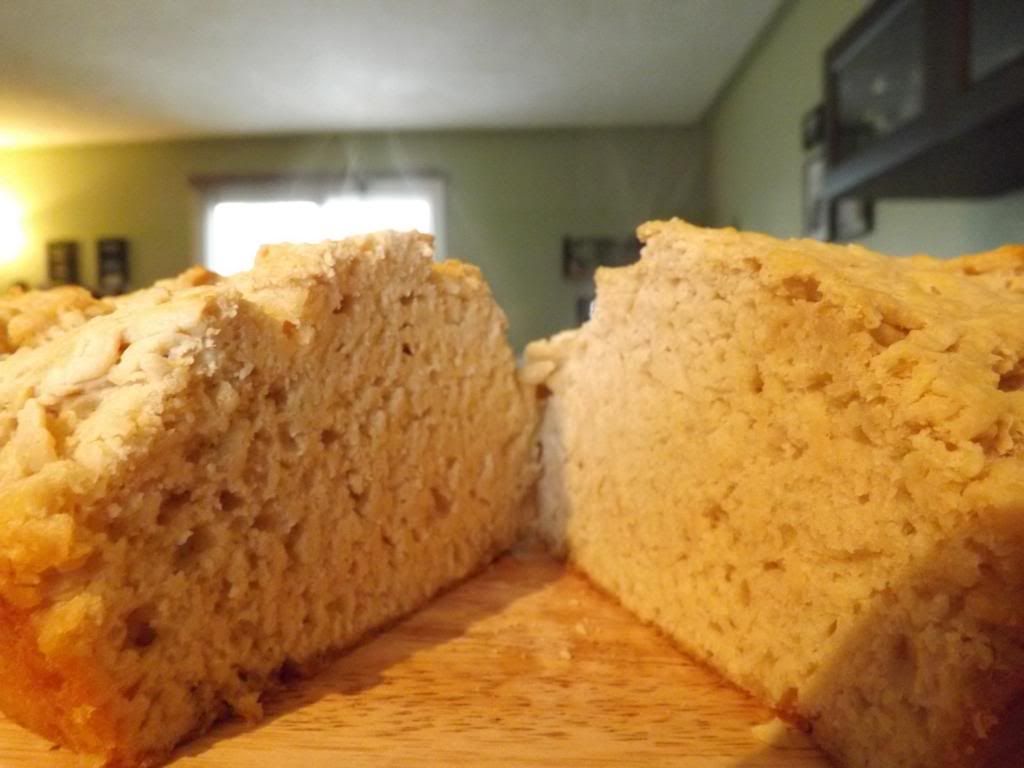 |
| Ohhhh yes. |
Tasty bread that tastes like beer, and it's done in about 35 minutes. Try it!
Sources used today:
McGovern, Patrick. Uncorking the Past: The Quest for Wine, Beer and Other Alcoholic Beverages. University of California Press: Berkeley, 2009.
Oliver, Garrett. The Brewmaster's Table: Discovering the Pleasures of Real Beer with Real Food. HarperCollins: New York, 2003.
*Recipe adapted from:
Williams Sonoma Collection: Bread. Free Press, 2002.

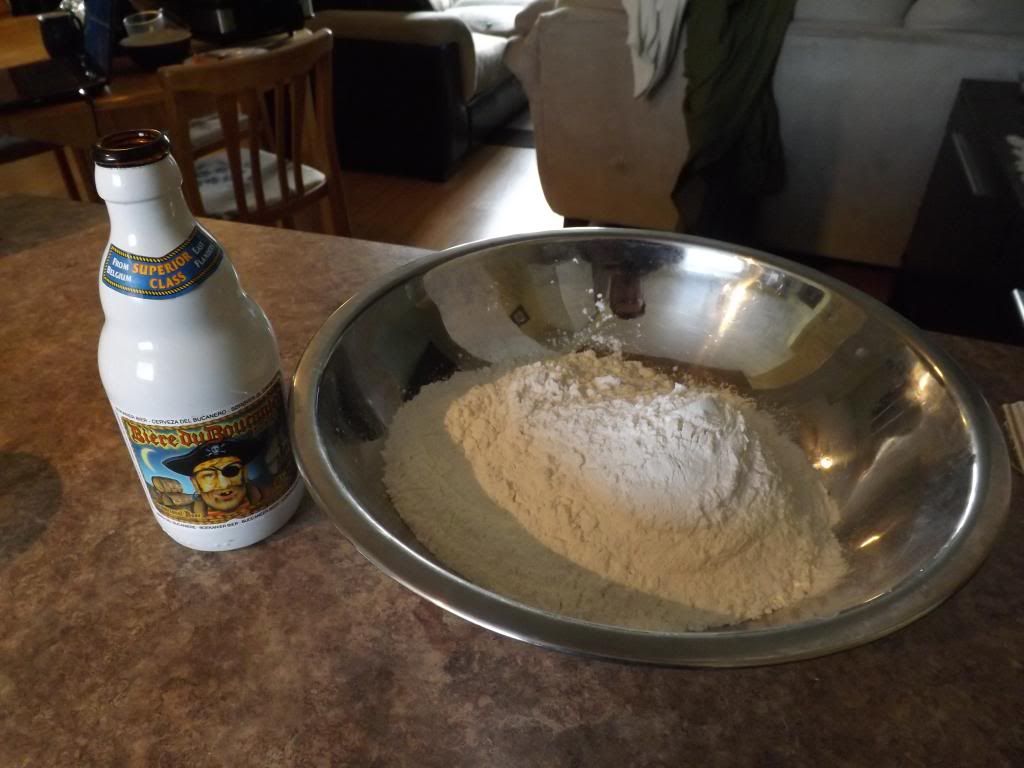
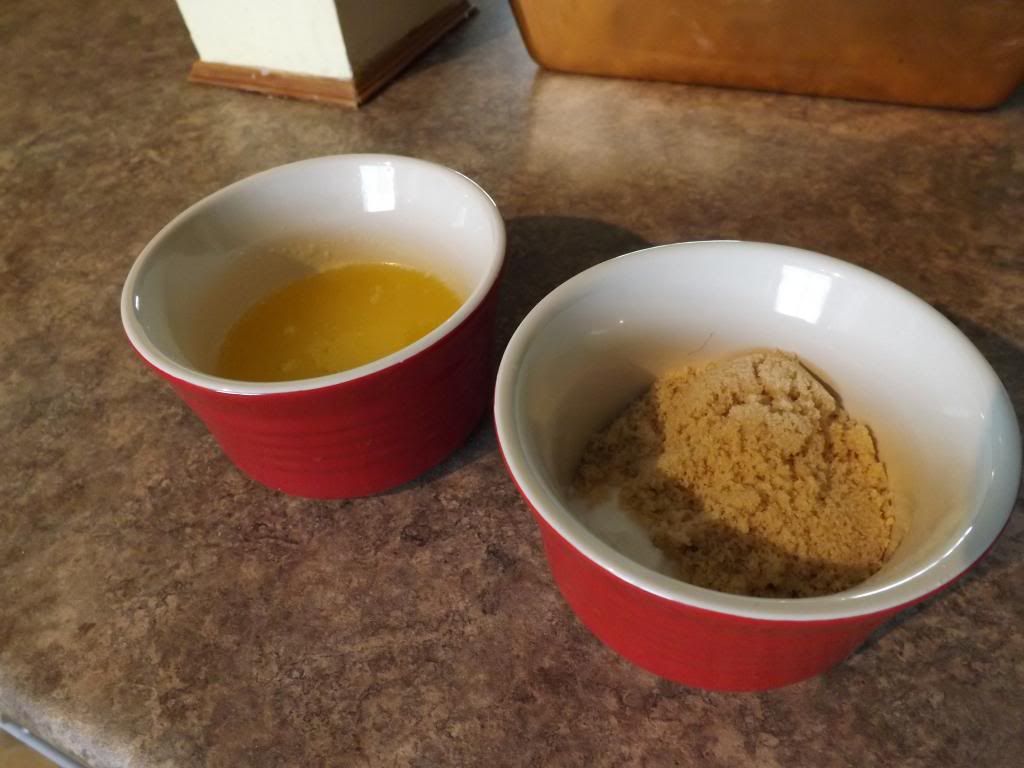
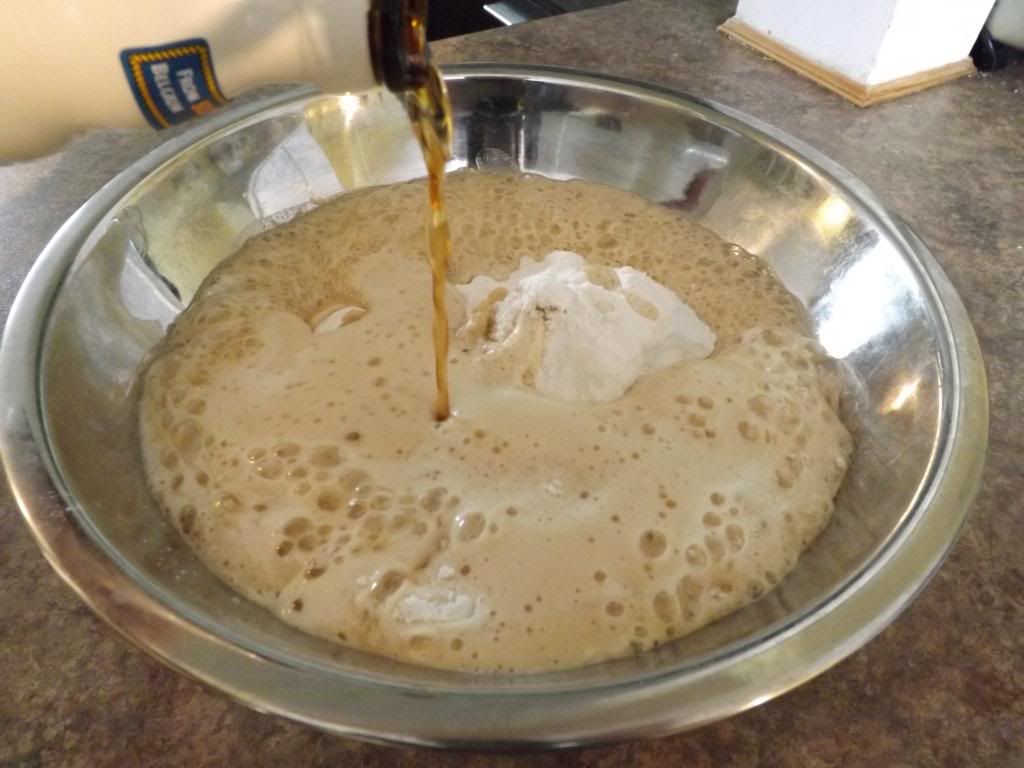

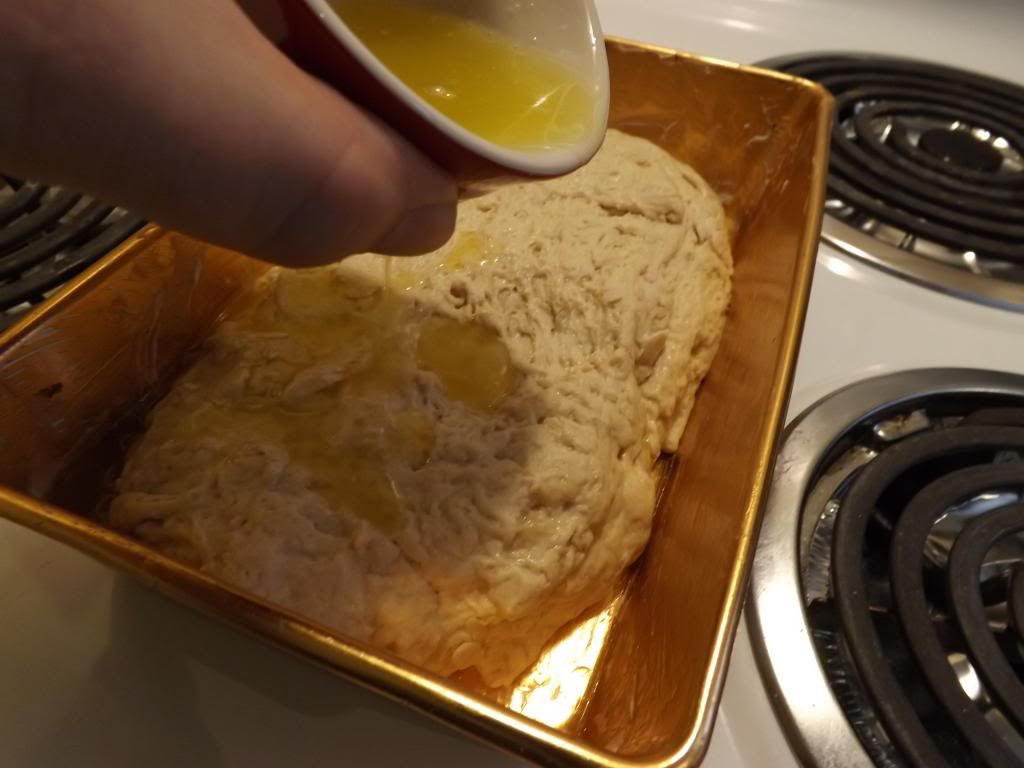

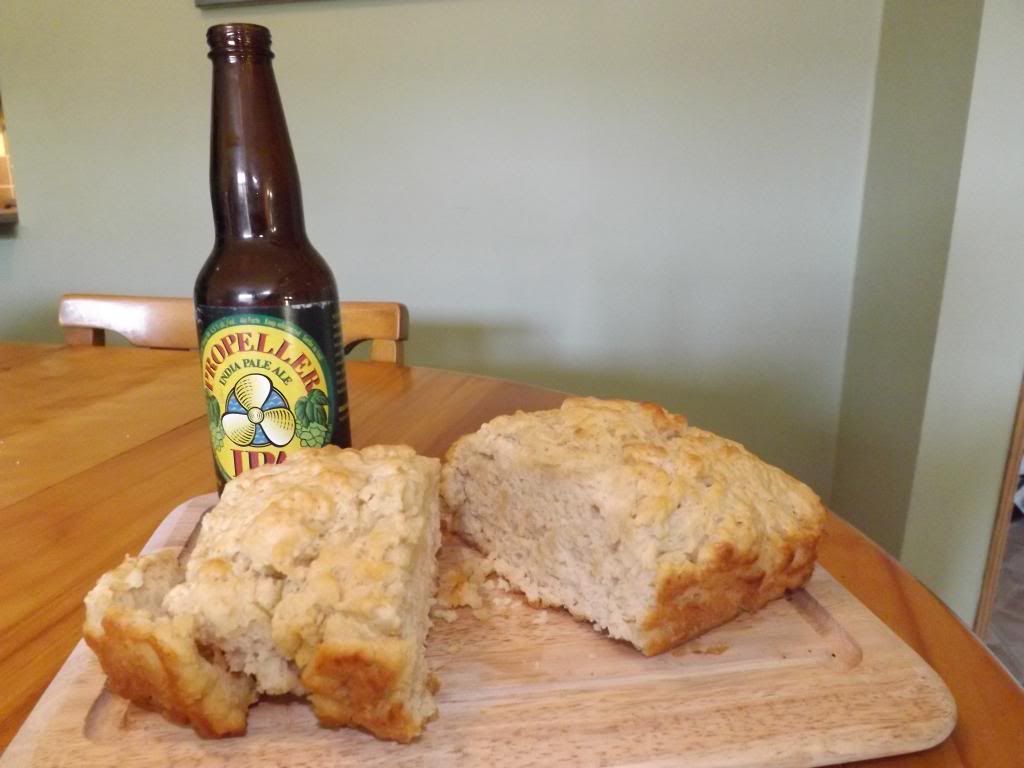
No comments:
Post a Comment